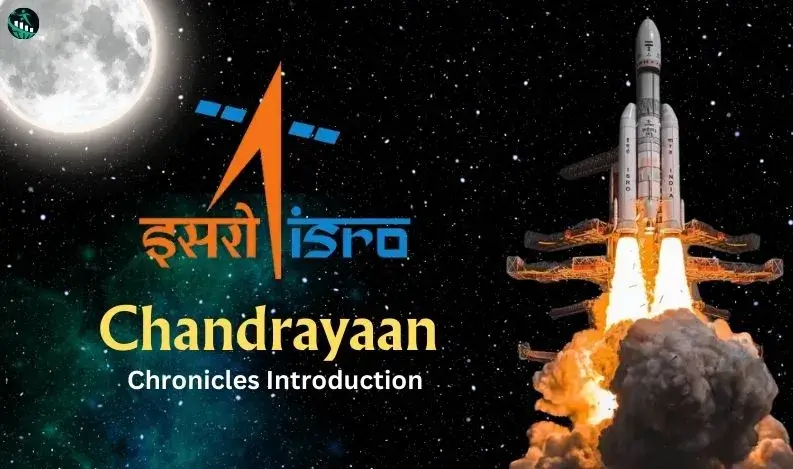
India's Lunar Saga: The Chandrayaan Chronicles Introduction
The enigmatic allure of the Moon has captivated humanity for millennia, serving as a canvas for our collective imagination and aspirations. In the 21st century, this fascination transcended myth and legend, manifesting in the ambitious lunar exploration missions undertaken by various nations. Among the countries reaching for the Moon, India has carved a unique niche with its Chandrayaan missions, orchestrated by the Indian Space Research Organisation (ISRO). These missions symbolize not only India's technological prowess and scientific curiosity but also its growing stature in the global space community.
Chandrayaan-1: Pioneering India's Lunar Exploration
Launched on October 22, 2008, Chandrayaan-1 marked India's audacious foray into lunar exploration. The mission was a testament to ISRO's ingenuity, leveraging indigenously developed technology to propel India into an elite spacefaring league.
Objectives
Chandrayaan-1 aimed to provide a comprehensive mapping of the lunar surface, studying its mineral composition and searching for water or ice, particularly in the shadowed craters. The mission sought to enhance our understanding of the Moon's geology and origins.
Key Technologies and Instruments
The mission was equipped with a suite of eleven scientific instruments, five from India and six from international partners. Notable among these were:
Terrain Mapping Camera (TMC): Created a high-resolution, three-dimensional map of the lunar surface, aiding in the study of its topography and geology.
Moon Mineralogy Mapper (M3): A pathbreaking instrument provided by NASA, instrumental in detecting water molecules on the lunar surface.
X-ray Spectrometer (C1XS): Designed to map the abundance of various elements, providing insights into the Moon's mineral composition.
Achievements
Chandrayaan-1's most significant contribution was the discovery of water molecules on the Moon, challenging long-standing assumptions about the lunar surface's aridity. The mission's data has been crucial for future lunar exploration missions, offering new perspectives on the Moon's resources.
Challenges
The mission was not without its hurdles. Chandrayaan-1 faced thermal issues that led to the failure of its star sensors. Despite these challenges, the mission exceeded expectations, achieving more than 95% of its objectives before the premature end in August 2009.
Chandrayaan-2: Elevating Ambitions and Facing Challenges
Buoyed by the success of Chandrayaan-1, ISRO launched Chandrayaan-2 on July 22, 2019. This mission aimed to further India's lunar exploration efforts with a soft landing near the Moon's south pole, a region uncharted by previous missions.
Components
Chandrayaan-2 comprised three main components, each with specific objectives:
Orbiter: Continues to circle the Moon, equipped with advanced instruments to map the surface and study the lunar atmosphere.
Vikram Lander: Named in honor of Dr. Vikram Sarabhai, the lander aimed to perform a soft landing and deploy the Pragyan rover for in-situ experiments.
Pragyan Rover: Designed to analyze the lunar soil and rocks, the rover's mission was cut short due to the lander's misadventure.
Achievements
Despite the setback with the Vikram lander, the orbiter component of Chandrayaan-2 has been a resounding success, providing valuable data on the lunar surface, including the presence of water ice in the polar regions.
Challenges
The mission's most significant challenge came during the landing phase. A software glitch led to a hard landing for the Vikram lander, demonstrating the inherent risks of space exploration.
Chandrayaan-3: The Quest for Redemption
ISRO's commitment to lunar exploration remains unwavering, with Chandrayaan-3 poised to build on the learnings from its predecessors. This upcoming mission, with its anticipated launch, aims to achieve the objectives that Chandrayaan-2 could not.
Mission Goals
Chandrayaan-3 is laser-focused on successfully demonstrating a soft landing on the Moon and conducting in-depth scientific research with its rover. The mission embodies ISRO's spirit of resilience, aiming to overcome the challenges faced by Chandrayaan-2.
Technological Enhancements
Learning from the experiences of Chandrayaan-2, ISRO has incorporated several technological enhancements in Chandrayaan-3, including a more robust landing mechanism and advanced scientific instruments for the rover.
Beyond Chandrayaan: Envisioning India's Lunar Future
The Chandrayaan missions are just the beginning of India's lunar exploration saga. Each mission has built a foundation for more ambitious endeavors, potentially including manned missions to the Moon.
Global Collaborations
India's lunar exploration efforts have opened avenues for international collaborations, enriching the global pool of lunar science and exploration. Partnerships with agencies like NASA and ESA are pivotal in advancing our collective understanding of the Moon.
Inspiring a Generation
Perhaps one of the most profound impacts of the Chandrayaan missions is their ability to inspire. They have ignited the imaginations of countless young minds across India and the world, encouraging a new generation to dream big and pursue careers in science and technology.
Conclusion
India's Chandrayaan missions encapsulate the essence of exploration — the relentless pursuit of knowledge in the face of adversity. Each mission, with its blend of triumphs and trials, contributes to a larger narrative of human endeavor to understand our place in the cosmos. As ISRO prepares for Chandrayaan-3 and beyond, the journey of discovery continues, with each mission paving the way for the next leap into the unknown. The Moon, with its silent allure, beckons us to keep exploring, keep questioning, and keep pushing the boundaries of what's possible.
Also Read:-



Recent Comments: